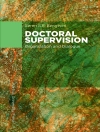First, let’s commend ourselves: how in the midst of a pandemic we faculty stepped up at record speed to teach in such a foreign learning environment. Try we did, adapt we did, and learn we did. But to be clear, and we already recognize this, this past spring was less about distance learning and more about crisis teaching.
This time around we have the opportunity to be much more purposeful and intentional, and that’s where The Distance Learning Playbook for College and University Instruction will prove absolutely indispensable.
Much more than a collection of cool tools and apps, The Distance Learning Playbook for College and University Instruction mobilizes decades of Visible Learning® research to reveal those evidence-based strategies that work best in an online environment. Supplemented by video footage and opportunities to self-assess and reflect, the book addresses every dynamic that must be in place for students to learn, even at a distance:
- Faculty-student relationships from a distance
- Teacher credibility from a distance
- Teacher clarity from a distance
- Engaging tasks from a distance
- Planning learning experiences from a distance
- Feedback, assessment, and grading from a distance
- Keeping the focus on learning, from a distance or otherwise
What does our post-COVID future hold? ‘We suspect, ‘ Fisher, Frey, Almarode, and Hattie write, ‘it will include increased amounts of distance learning. In the meantime, let’s seize on what we have learned to improve post-secondary education in any format, whether face-to-face or from a distance.’
‘We are all still active faculty members, committed to teaching, scholarship, and service. The unexpected transition to remote learning doesn’t mean we no longer know how to teach. We can still impact the lives of our students and know that we made a difference. The Distance Learning Playbook for College and University Instruction will show you how.’
~Douglas Fisher, Nancy Frey, John Almarode, and John Hattie
Cuprins
List of Videos
Acknowledgments
Introduction
A Visible Learning® Primer
Visible Learning and Distance Learning
A Question of Equity
Module 1: Self-Care
Learning Intentions and Success Criteria
Conclusion
Module 2: The First Week of Classes
Learning Intentions and Success Criteria
Develop a Classroom Management Plan for Distance Learning
Establish Norms
Link Norms to Class Agreements
Identify Expectations for Synchronous Distance Learning
Develop and Teach Organizational and Procedural Routines
Design a Considerate Website
Your First Distance Classes
Learn Students’ Interests
Conclusion
Module 3: Faculty—Student Relationships From a Distance
Learning Intentions and Success Criteria
Characteristics of Faculty–Student Relationships
Judgment and Will, Not Just Knowledge and Ability
Peer-to-Peer Relationships Are Influenced, Too
A “Chilly” Classroom
Reaching the Hard to Teach
Increase Your Touchpoints With All Students
Conclusion
Module 4: Teacher Credibility at a Distance
Learning Intentions and Success Criteria
Teacher Credibility Defined
Conclusion
Module 5: Teacher Clarity at a Distance
Learning Intentions and Success Criteria
Start With the Standards and Competencies
Create a Flow of Learning: Planning for Class
Create Learning Intentions
Identify Success Criteria
Find the Relevance
Conclusion
Module 6: Engaging Tasks at a Distance
Learning Intentions and Success Criteria
Think Functions of Engagement, Not Just Tools
Set the Conditions for Engagement and Learning
Select the Tools That Meet These Functions and Conditions
Design Tasks With Engagement in Mind
Design a Considerate Schedule to Promote Engagement
Conclusion
Module 7: Planning Learning Experiences at a Distance
Learning Intentions and Success Criteria
Demonstrating
Collaborating
Coaching and Facilitating
Practicing
Conclusion
Module 8: Feedback, Assessment, and Grading
Learning Intentions and Success Criteria
Feedback to Students
The Socioemotional Links to Feedback
Feedback at a Distance
Formative Evaluation
Summative Evaluations
Competency-Based Grading
Conclusion
Module 9: Keeping the Focus on Learning, Distance or Otherwise
Learning Intentions and Success Criteria
Learning From Other Crises
Use Crisis Learning to Make Colleges and Universities Better
Make Learning Better for Students
Make Learning Better for Teachers
Conclusion
Appendix
References
Index
About the Authors
Despre autor
John Hattie, Ph D, is an award-winning education researcher and best-selling author with nearly thirty years of experience examining what works best in student learning and achievement. His research, better known as Visible Learning, is a culmination of nearly thirty years synthesizing more than 2, 100 meta-analyses comprising more than one hundred thousand studies involving over 300 million students around the world. He has presented and keynoted in over three hundred international conferences and has received numerous recognitions for his contributions to education. His notable publications include Visible Learning, Visible Learning for Teachers, Visible Learning and the Science of How We Learn; Visible Learning for Mathematics, Grades K-12; and 10 Mindframes for Visible Learning.












